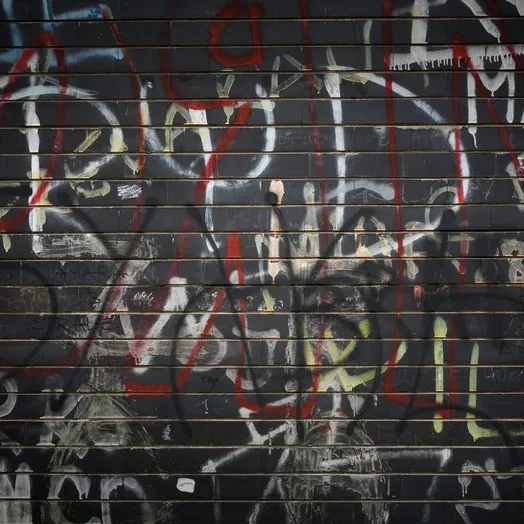How Anti-Graffiti Coatings Protect Commercial and Public Spaces from Vandalism
Anti-graffiti coatings are designed to repel or resist paint, ink, and markers, making it easier to wipe away unwanted scribbles before they leave a lasting mark.
Graffiti might be considered street art in some circles, but for property owners, business owners, and city managers, it often brings nothing but frustration. A beautifully maintained storefront, a clean public mural, or a crisp concrete wall can quickly lose its shine when spray paint shows up overnight. Vandalism may be spontaneous, but dealing with it shouldn't throw everything into chaos. That's where anti-graffiti coatings step in—silently shielding surfaces and making cleanup a far less dramatic affair.
Anti-graffiti coatings are designed to repel or resist paint, ink, and markers, making it easier to wipe away unwanted scribbles before they leave a lasting mark. They work behind the scenes, providing clear protection that doesn't alter the appearance or texture of the surface. The wall still looks like a wall. The mural still pops with color. The building still shows its best face to the public. But underneath, a quiet barrier keeps things under control.
The Protective Layer That Changes the Game
Traditional paint and porous surfaces absorb graffiti like a sponge, locking pigments deeply into the material and making removal nearly impossible without power washing, sandblasting, or aggressive chemicals. That kind of cleanup isn't just tough—it's expensive, time-consuming, and often damaging to the original surface.
Anti-graffiti coatings change the rules. They create a non-stick surface that stops paint and markers from bonding permanently. Taggers might still try, but their handiwork won't last. Cleanup is faster, simpler, and far gentler on the building or structure. In some cases, just a little soap and water or a gentle pressure rinse is enough to remove the graffiti.
Sacrificial Vs. Non-Sacrificial Coatings
Not all coatings function the same way. Some are sacrificial—designed to be removed along with the graffiti, taking the mess with them. Once cleaned, they're reapplied to restore the surface's protective layer. Others are non-sacrificial, built to withstand multiple cleanings without needing replacement.
Both types have their place. Sacrificial coatings are ideal for historic buildings or delicate surfaces, offering protection without altering the material. Non-sacrificial coatings, often made from polyurethane or fluorinated polymers, are heavy-duty solutions for areas that are frequently exposed to harsh conditions—think transit stations, parking garages, and downtown business fronts.
Maintaining A Clean, Professional Appearance
First impressions matter, especially in commercial and public spaces. A building covered in graffiti sends a message that it's not cared for—and unfortunately, that often invites more vandalism. It's a frustrating cycle. One tag turns into five. A small drawing leads to a whole wall of chaos.
Anti-graffiti coatings help break that cycle. When tags are easy to remove, they don't stick around long enough to attract attention. The building stays clean. The business looks open and professional. The city space remains inviting rather than neglected. It's a quiet way to show pride in a space without posting a "Don't spray paint here" sign on every wall.
Long-Term Cost Savings
Graffiti removal isn't just annoying—it's costly. Repainting, resurfacing, and calling in specialists every few months adds up quickly. Anti-graffiti coatings significantly reduce those repeat costs. The initial investment pays for itself after just a few cleanups, saving both time and money over the long haul.
Plus, the labor involved in removing graffiti becomes far less intense. No more harsh chemicals or pressure washing sessions that leave employees grumbling and paint chipping. The coating takes the brunt of the work, leaving a smoother, less stressful maintenance routine behind.
Keeping Public Art and Infrastructure Safe
Public spaces thrive on creativity—murals, sculptures, signage, and other creative elements give communities their character. But those features are often prime targets for graffiti. A colorful mural or city sign might attract as many unwanted markings as compliments.
Applying anti-graffiti coatings to public art helps preserve the integrity of the original work. Instead of being repainted or touched up repeatedly, the artwork stays crisp and clean, protected beneath a clear barrier that keeps the creativity intact and the vandalism out. It's an ideal balance between expression and preservation.
Versatility Across Surfaces
One of the biggest advantages of anti-graffiti coatings is their flexibility. They can be applied to concrete, brick, metal, glass, painted surfaces, and even wood. That makes them a solid choice for everything from storefronts and bus stops to restroom doors and utility boxes.
Coatings also come in a range of finishes—from matte to glossy—so the final look matches the space's style. There's no need to sacrifice appearance for protection. The wall still resembles part of the original design, but with a secret weapon built in.
A Smart Step Toward Safer, Cleaner Communities
Graffiti often starts small, but it can signal bigger problems when left unaddressed. Clean, well-maintained spaces feel safer, more welcoming, and more respected. Anti-graffiti coatings contribute to that sense of pride and order. They support community values, protect private investments, and minimize maintenance headaches.
With one layer of invisible protection, buildings, murals, signs, and transit stations are better equipped to withstand vandalism. The difference may not be evident to the public—but for those responsible for cleaning up, it's a game changer.
Graffiti may come and go, but the surfaces beneath don't have to suffer because of it. With the right coating, the city stays beautiful, the storefront stays sharp, and the maintenance crew gets a well-earned break.

